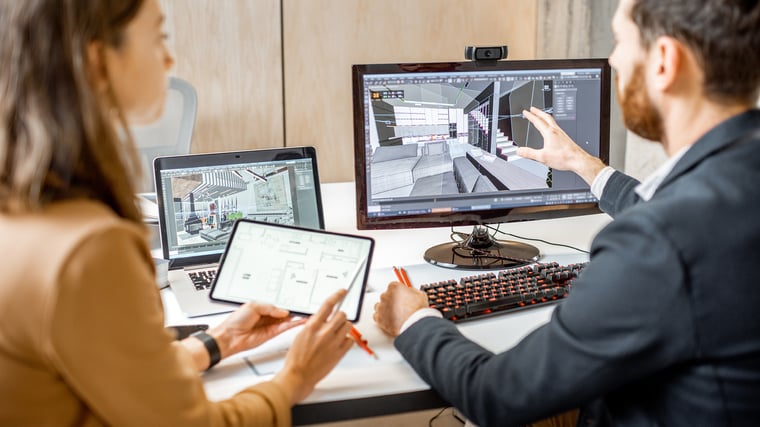
3D visualisation is shaping the future of interior design
Interior design enters an exciting new era where people are seeing things differently.
The interior design industry has come a long way from the days when hand-drawn sketches and mood boards were the primary tools of designers. In this digital age, designers are more likely to sketch on tablets or touchscreen computers and mood boards are presented as digital images with digital twins of materials as samples.
With the future of interior design including gaming environments and the Metaverse, creatives in this field can now showcase their visions with more lifelike presentations, thanks to the advances in digital visualisation. 3D models and renders have become game-changers for interior designers and they're taking their craft to new heights.

Accurate and detailed design
3D visualisation is the next era of interior design. The benefits for designers include:
Improved accuracy of measurements and cost-effective designs.
The ability to create more realistic designs to share with clients to support communication about the project.
The freedom to experiment with materials and understand how different materials will look when used together in a room.
3D visualisation software allows designers to create highly detailed renderings of their designs, including lighting, textures, and finishes. This software is also highly customisable, allowing designers to tweak and adjust their designs in real time, making the design process more efficient and iterative.
Another advantage of 3D visualisation is that it allows designers to offer personalised services to their clients. With 3D visualisation, designers can create highly accurate and detailed designs that are tailored to their client's specific needs and preferences. Another advantage is the use of digital fabrics for greater customisation. If a designer uses a Twinbru digital asset from any of our partner platforms, they can rest assured that the physical fabric can be ordered from a local supplier so they can offer a greater range of choices to their clients. It will help create a look that is truly unique.

Transformation ahead
While the future of interior design is incredibly promising, it’s not without some challenges. This is digital technology and it’s a world that is still evolving at a dizzying pace. For many designers, this may be daunting as they’ll be required to keep up to date with the latest technologies and might find it overwhelming to choose a digital visualisation platform or system that they’re comfortable with.
Established design businesses may already have digital systems in place and including new elements could hamper the seamless workflow. For example, some 3D models may not be compatible with the designers’ chosen software or they may have to switch to a new system that offers more flexibility in terms of digital assets and design capabilities.
Another often overlooked issue is that of data security. With digital designs, there is a need for greater digital security to not only protect the designer’s work but also protect the information relating to their client. Images and visuals will have to be securely transferred for viewing and can’t be shared too readily.

The Future of Interior Design
The future of interior design will be shaped by these technologies as they become more accessible and affordable for consumers. Not having to visit showrooms or order samples when making decisions can simplify the process and enhance the communication between the designer and their clients.
Technology can never replace the creativity of interior designers and how they achieve the delicate balance between form and function while giving spaces a chosen feeling. What it can do is minimise some of the typical challenges of the job so there is a greater focus on design and creating unique spaces.


 English
English  ελληνικά
ελληνικά
0 comment(s)